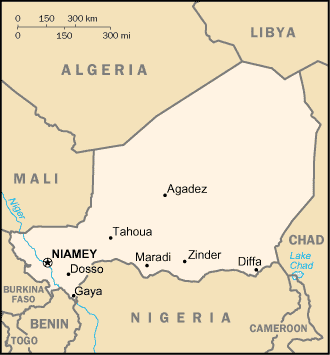Question Sheet: Sahara Cemetery
Before reading:
- Where might people look for information about the beginning of
civilizations?
- What does an archaeologist do?
During reading:
- What kinds of artifacts did researchers find in the Sahara?
- What period of time in Earth’s history does the Holocene epoch cover?
- Why was the site of the ancient cemetery in Niger nicknamed Enigma?
- Why is the archaeological site described in this article called a “jackpot
of information”?
- What did scientists learn from the enormous number of catfish bones found at
the ancient settlement?
- What kinds of information can scientists gather from human skeletons?
After reading:
- How does archeology differ from paleontology? In what ways are the two
disciplines related?
- When researchers have finished studying bones and other artifacts found at
an archaeological site, who should keep the artifacts? Do you think the country
where scientists made the discoveries has a right to keep the materials, or
should foreign scientists be allowed to bring them to their own countries for
display and further study? Why?
- Why was the transition from hunting and gathering to raising crops and
animals an important change in the history of our human ancestors? How did this shift lead to the development of civilizations?
- How would you go about learning more about the Holocene epoch? Where would
you look for information? What defines the beginning of this period in Earth’s
history? See en.wikipedia.org/wiki/Holocene(Wikipedia).
- What measures besides keeping the site secret could help preserve the
ancient cemetery discovered in Niger?
- Large parts of what is now the Sahara desert were once lush and green. What
might have caused such a change in the environment in the last 10,000 years?
SOCIAL STUDIES
Why is Africa a good place to look for signs of early civilizations? To what parts of Africa (besides the desert in Niger) might an archeologist go to study human settlements during the Holocene epoch? See www.archeodroit.net/african-archaeology/ (Anthropology
Resources on the Internet).
LANGUAGE ARTS
- Imagine that archaeologists from the future have dug into a modern-day trash
heap (or a sanitary landfill) near your town. What might they conclude about our
civilization? Write a few entries for a diary kept by one of these
archaeologists, describing and interpreting some of the discoveries. See en.wikipedia.org/wiki/Garbology(Wikipedia).
- Visit a museum in your area that has displays of ancient human bones (or go
to an online museum exhibit). Write a brief report about the displays. What do
these exhibits tell you about past civilizations? Besides bones, what other
artifacts do these displays include? See, for example, www.civilization.ca/indexe.asp (Canadian Museum of Civilization), www.ancientcivilizations.co.uk/home_set.html (British Museum),
or www.carlos.emory.edu/ODYSSEY/ (Odyssey Online).
MATHEMATICS
 |
How many countries surround the West African country of Niger? If you were to color the map shown above so that no two countries that share a border have the same color, what is the smallest number of colors that you would need?